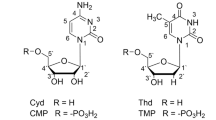Play all audios:

Metabolites of polychlorinated biphenyls (PCBs) bind with high affinity to uteroglobin, a small homodimeric protein that also binds progesterone. We present the solution structure of the
reduced form of rat uteroglobin in complex with a PCB methylsulphone, (MeSO2)2-TCB. The structure reveals the molecular basis for the accumulation of (MeSO2)2-TCB by uteroglobin. The
structure also shows how ligand binding and release might be controlled by reduction/oxidation of two intermolecular disulphide bonds. Breakage of these bonds induces a local unfolding of
the N- and C-termini and a separation of helices creating a channel into the binding site. These effects make the ligand binding cavity readily accessible to entry of the ligand.
Anyone you share the following link with will be able to read this content:
